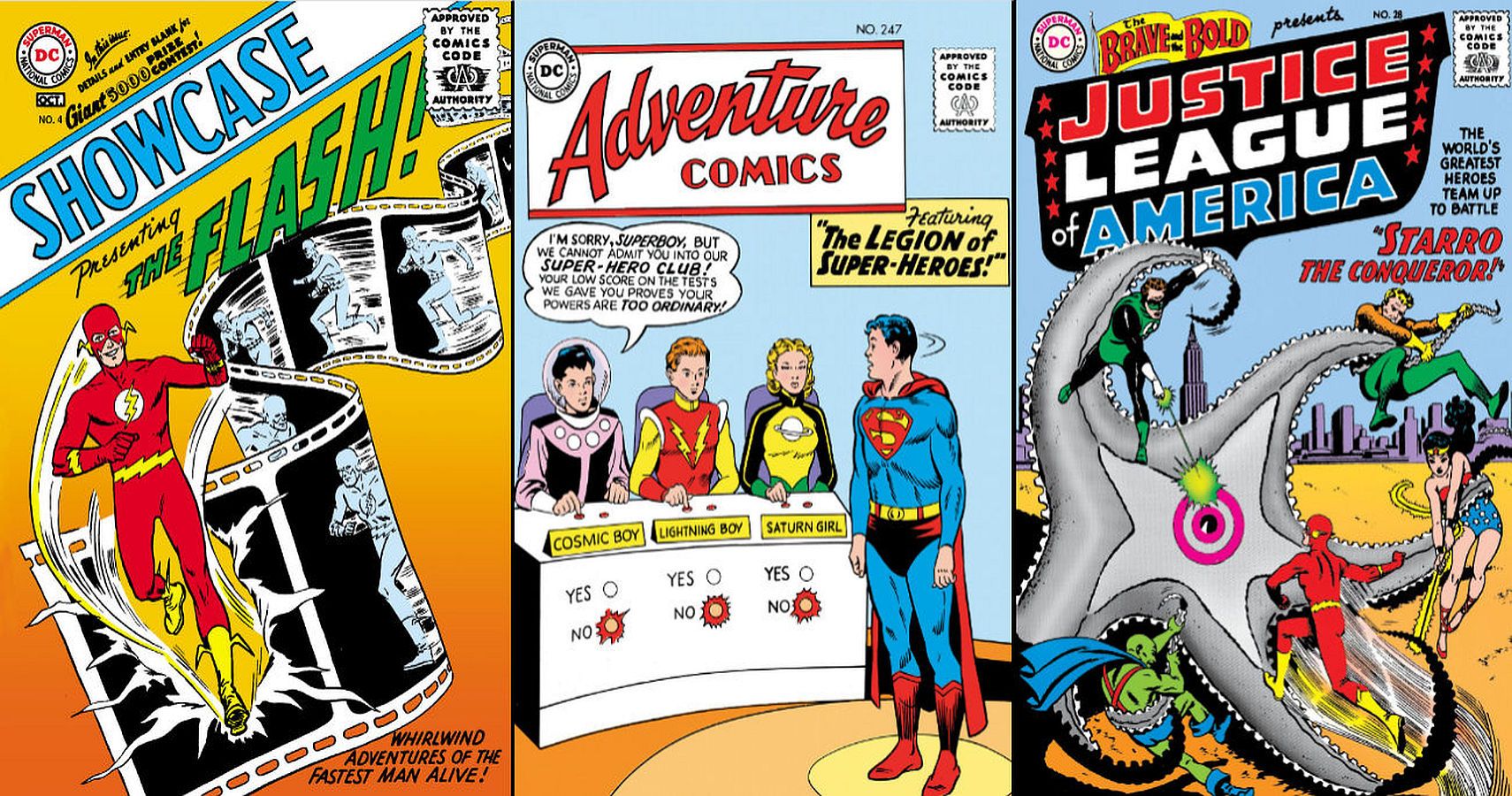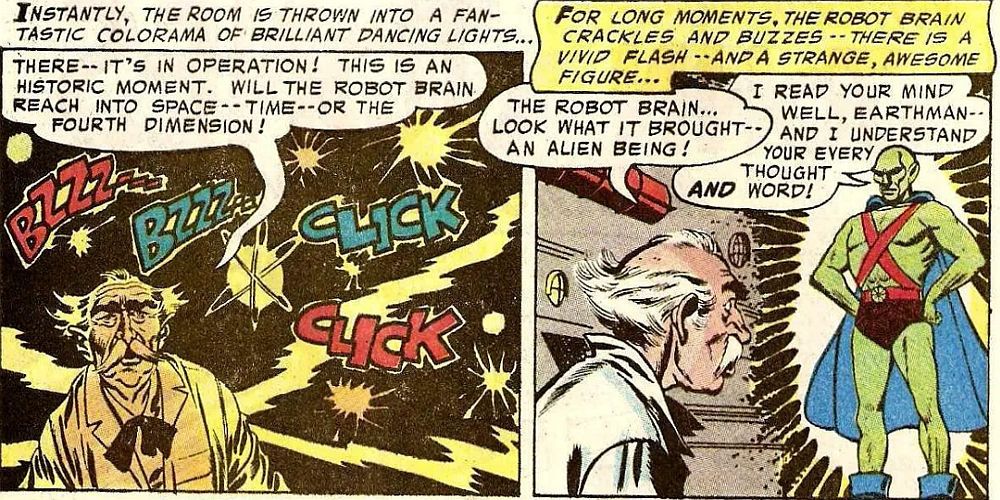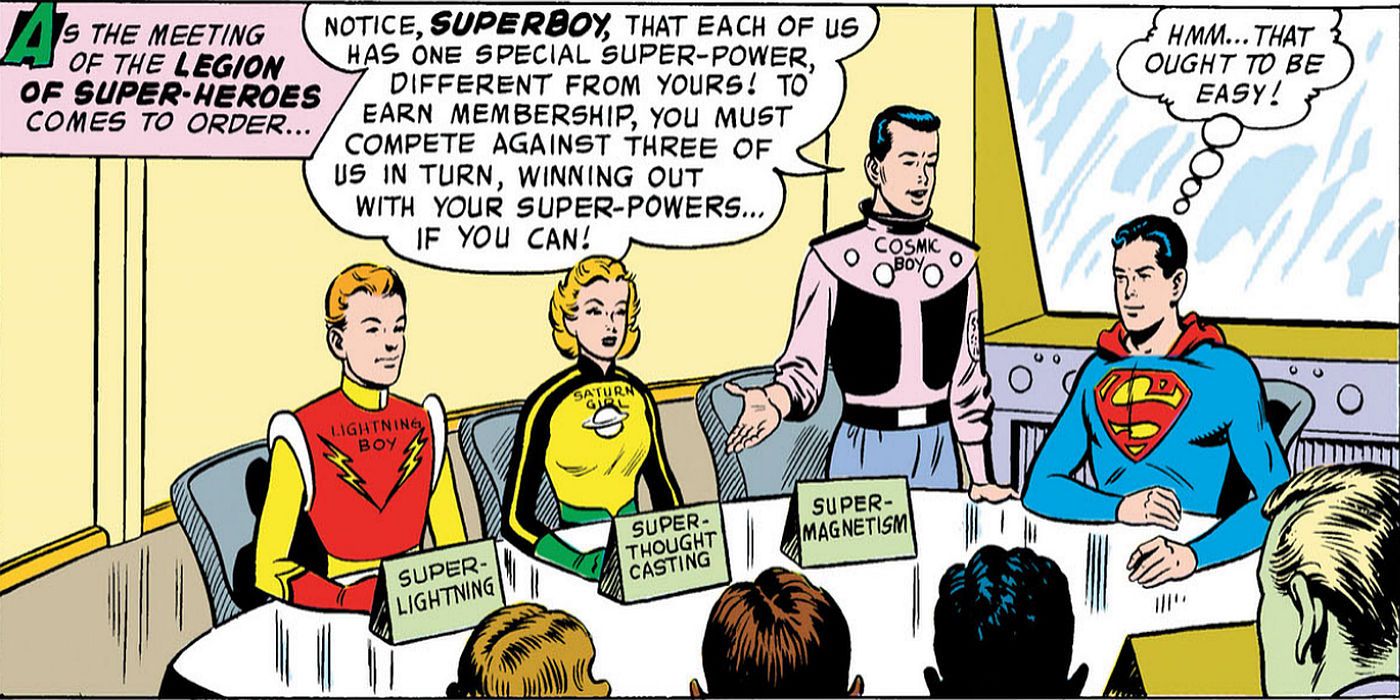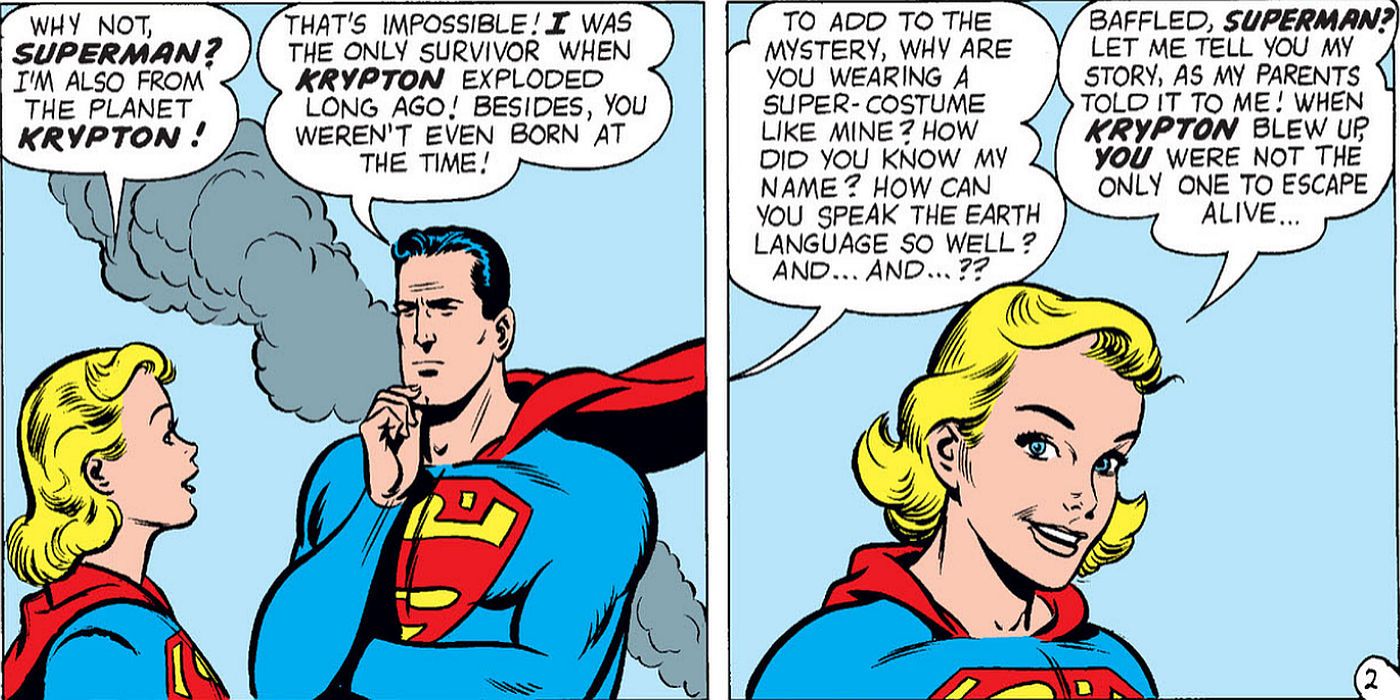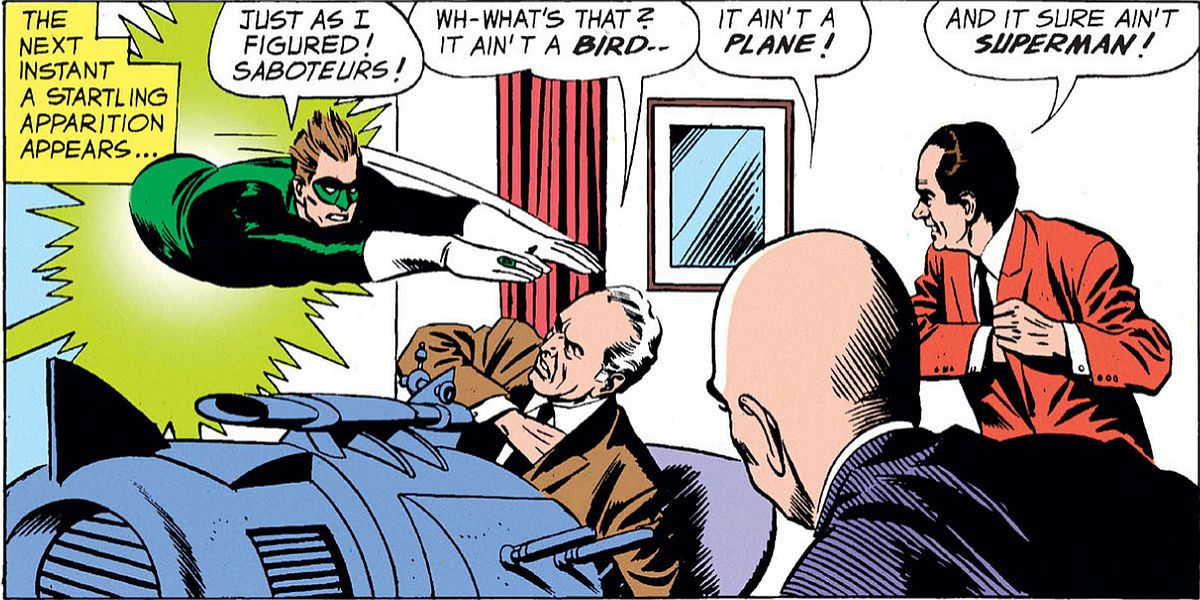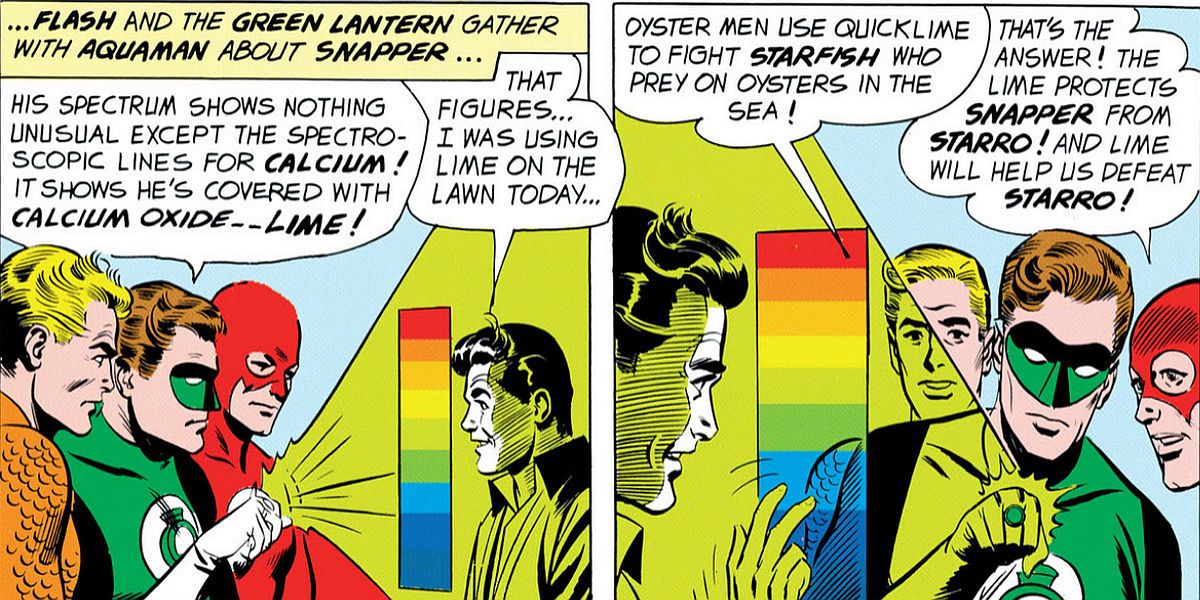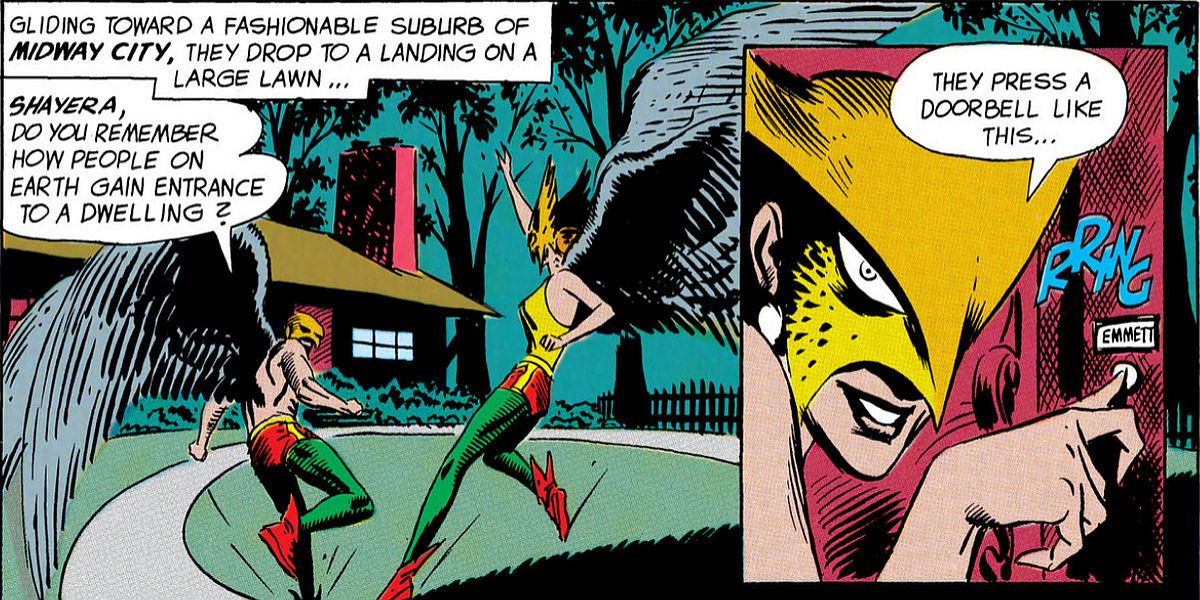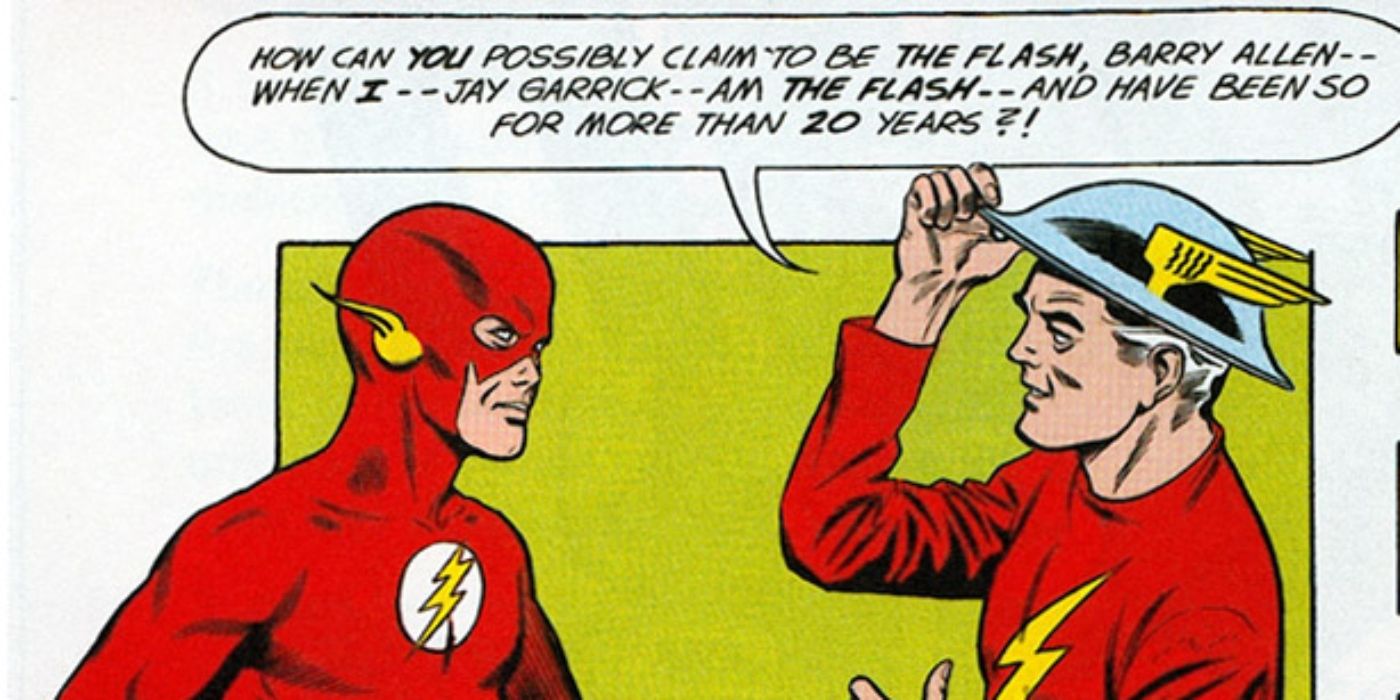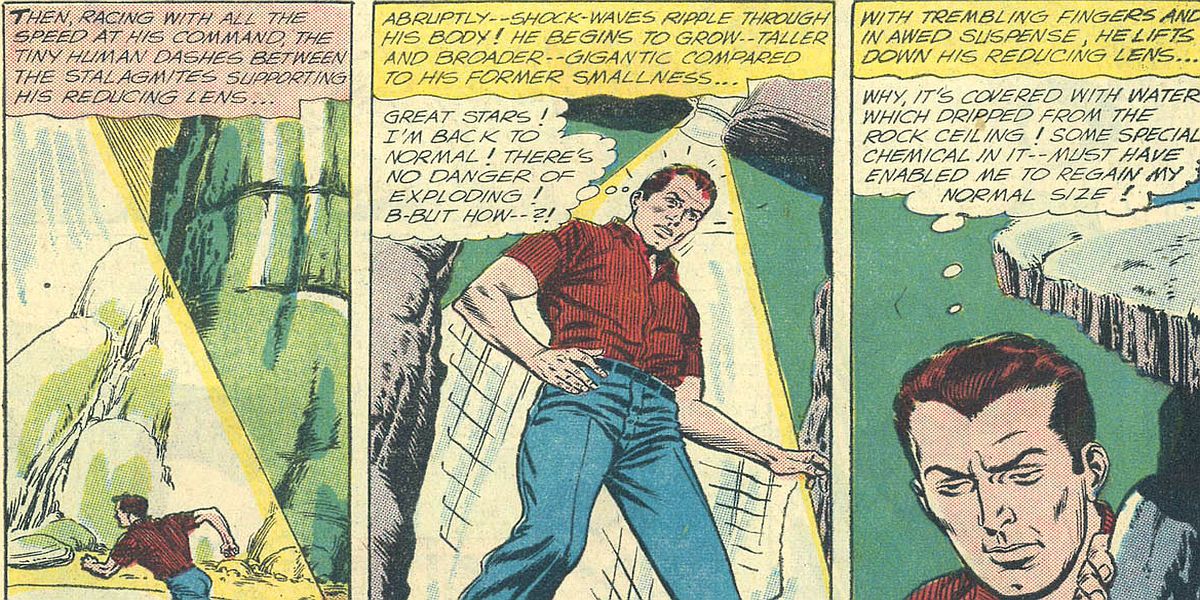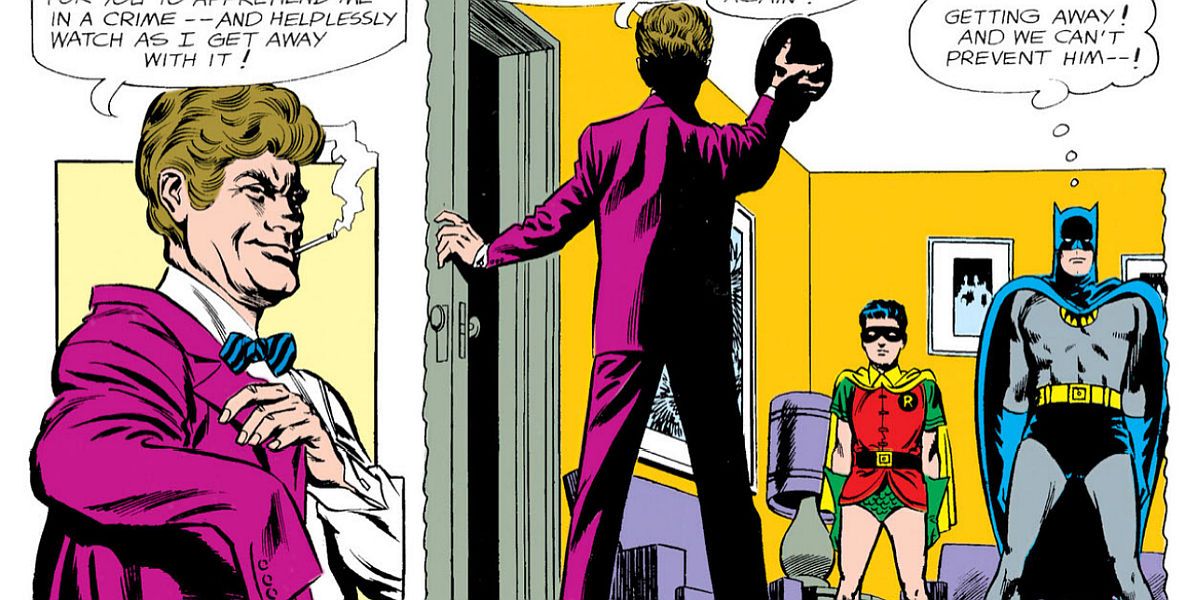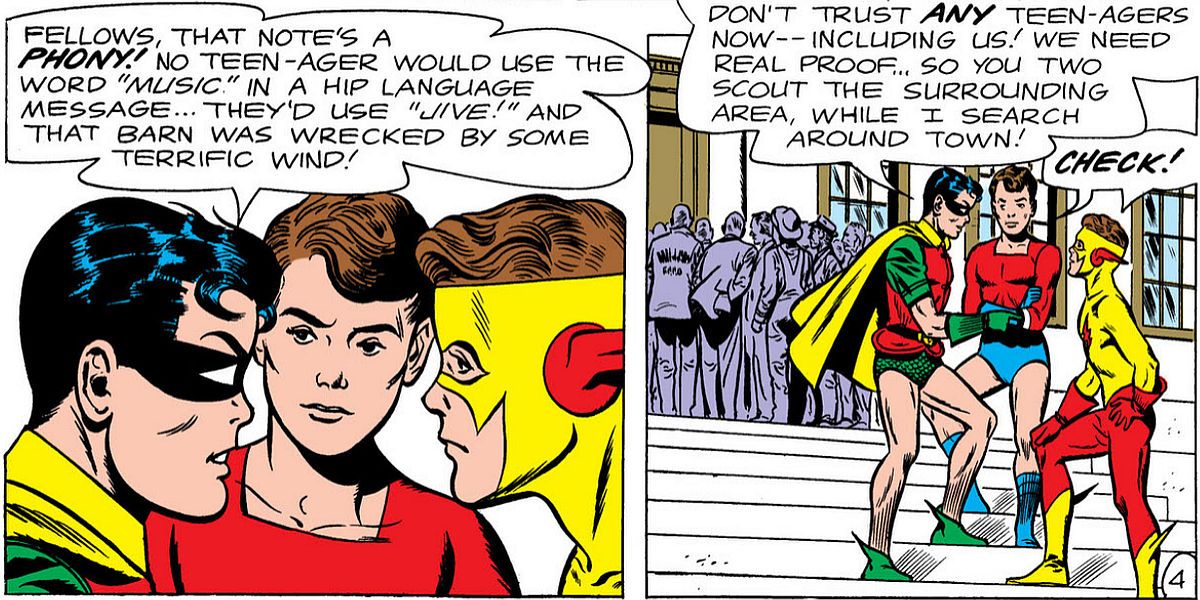The decade between the end of World War II and the start of the Silver Age was one of attrition for DC Comics. Gone were Golden Age heroes like those in the Justice Society. Instead, the company focused on their trinity of heroes -- Superman, Batman, and Wonder Woman -- and sprinkled the rest of the line with books about war, romance, and science fiction.
It wasn't until editor Julius Schwartz worked with writer Gardner Fox and artist Carmine Infantino to introduce a new speedster with the Flash monicker. That one issue of Showcase comic ushered in a new generation of superheroes at DC Comics. DC Comics' Silver Age launched the second generation of heroes. In turn, it rejuvenated the line. Here are the first 11 comics in chronological order.
11 Detective Comics #255 (1955) Introduced The Martain Manhunter
Though Showcase #4 is the historical start of DC's Silver Age, the technical beginning is really Detective Comics #255. This issue introduced readers to Martian Manhunter, a founding member of the Justice League of America. However, the martian's initial role wasn't one of a superhero.
Being featured in Detective meant he was intended to play an investigative role in his feature. That would be as police detective John Jones, the alter ego Manhunter, put together when he was transported to Earth. That would shift as he became a prominent member of the JLA a few years later.
10 Showcase #4 (1956) Introduced The New Flash
All it took was an exploding cabinet of chemicals to endow slowpoke Barry Allen with the Speed Force (though it was unbeknownst to him at the time). As a result, he became the second-generation Flash and ushered in DC's Silver Age. He also became a catalyst for other heroes and groups introduced over the next 15 years or so.
A big difference between Barry and his Golden Age counterpart, Jay Garrick, was the type of villains he battled. Besides his initial encounter with the Turtle, most of the Flash's rogues gallery comprised people who used science and technology to do bad things. It's why Captain Cold, Mirror Master, and Weather Wizard became as popular as the Scarlet Speedster.
9 Adventure Comics #247 (1958) Superboy's 1st Meeting With The Legion
The Boy of Steel had already been around for a decade in his own adventures by the time he visited the 30th century. Yet, his introduction to the Legion of Super-Heroes drew another group of readers. One that was interested in the future that writer Otto Binder and artist Al Plastino created.
Eventually, the cast of Legionnaires expanded past the trio of founders. For most of the Silver Age, the team of teenagers resided in Adventure Comics. They would continue to appear in one form or another for decades after their introduction.
8 Action Comics #252 (1959) Gave Fans Superman's Cousin -- Supergirl
The Superman stories in Action Comics and his own title were lackluster at best. In either book until 1959, not much occurred when Kara Zor-El, Superman's female cousin, was introduced. After that, there was something a little more interesting.
How did Supergirl come to Earth after Kal? Unlike her older cousin, the city she lived in, Argo City, was jettisoned from Krypton's surface when it exploded. Surviving for years, Kara eventually rocketed away from the floating city when it got damaged. The whole concept set up a new dynamic for the Man of Steel.
7 Showcase #22 (1959) Presented New Green Lantern Hal Jordan
The original Green Lantern, Alan Scott, received his power from a mystical lamp. Hal Jordan's powers were from a pure science fiction element. In this case, a dying alien part of a Green Lantern Corps. On the distant planet Oa, their headquarters hosted dozens of "space cops" from various regions of the galaxy.
What made the introduction of this new Green Lantern so well-received in Showcase #22 was the art of Gil Kane. Hal's actions burst from the page. For instance, making part of an exterior wall transparent so he could phase inside. Additionally, the inception of fellow aliens like Sinestro combined the current interest of science fiction with superheroes.
6 Brave And The Bold #28 (1960) Brought Together The Justice League
Before writer Gardner Fox introduced the Justice League in The Brave and the Bold #28, there hadn't been a superhero group in the DC universe for a decade. The Justice Society of America's last adventure was published in 1950. This made the JLA the first superteam of the Silver Age.
The issue did two things. First, it brought together Trinity's old guard with new heroes Flash, Green Lantern, and Martian Manhunter. Second, it introduced a villain from outer space, Starro, that would become a thorn in the JLA's side for decades.
5 Brave And The Bold #34 (1961) Introduced The New Hawkman And Hawkgirl
After the successful resurrection of so many Golden Age heroes, writer Gardner Fox tackled another pair not long after the Justice League. In Brave and the Bold #34, he brought back Hawkman and Hawkgirl. Both staples of the JSA during the war years.
However, they weren't terrestrial like their predecessors. Rather, Fox and artist Joe Kubert moved them to the planet Thangar. There, they were Katar and Shayera Hol, intergalactic police. Though they initially landed on Earth to apprehend the criminal Byth, the pair remained.
4 The Flash #123 (1961) Gave Readers A Glimpse Of Earth-Two
Though readers were delighted with the new direction DC Comics had gone, one question lingered in their minds. What happened to the original Flash, Green Lantern, and Hawkman that they read about years before? That answer came from the Silver Age architect Gardner Fox in the legendary Flash #123.
In "Flash of Two Worlds," Fox introduced readers to Earth-Two. This, it turns out, is where the Golden Age heroes now resided. It seemed like a logical solution back then, one that resulted in numerous cross-Earth adventures. Eventually, it got out of control. To the point that DC had to create an entire mini-series, Crisis on Infinite Earths, to correct things.
3 Showcase #34 (1961) Revealed The New Atom
Science ruled again when Fox joined Gil Kane and inker Murphy Anderson to introduce a new version of the Atom. This time around, it was nuclear physicist Ray Palmer who took on the name. On top of that, his powers were far different than the Golden Age hero.
Rather than being a smaller man with a powerful punch, Palmer had discovered the remnant of a white dwarf star that allowed him to change his size. This Atom's origin took two separate segments in Showcase #34 to complete. The first featured the discovery of his new powers. The second contained the introduction of his superhero identity.
2 Detective Comics #327 (1964) Introduced Batman's New Look
Not much had changed in Batman's universe since the start of the Silver Age. Besides becoming a member of the Justice League, he continued to battle criminals and aliens in his own books. However, this changed when Julius Schwartz, another Silver Age architect, was brought in to revitalize the Caped Crusader.
Schwartz asked Flash artist Carmine Infantino to redesign the hero and altered his costume. Infantino was also the man who gave Batman his iconic yellow chest emblem. Around this time, Batman and Robin also stopped battling aliens and returned to their detective routes.
1 Brave And The Bold #54 (1965) Brought Together The Teen Titans
Certainly not the last Silver Age comic to come along, Brave and the Bold #54 was certainly important. It introduced two concepts—kid sidekicks going solo and them creating their own team.
Granted, this wasn't the first team of teens in DC's comic book line -- the Legion of Super-Heroes preceded them by almost a decade. Still, it was important because the trio of heroes, Robin, Aqualad, and Kid Flash, were part of popular franchises at the time. The appearance of the Teen Titans in this comic launched a team history that continues through the 21st century.

